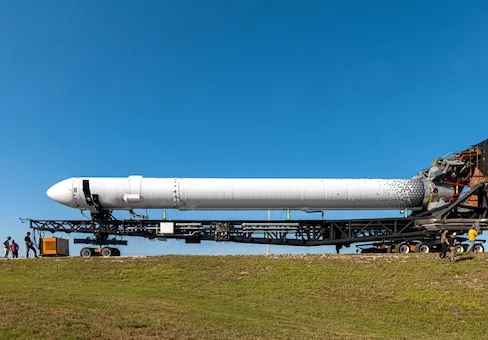Relativity space: 3D-printed rocket maker focuses on larger vehicles for commercial launches
Relativity Space, the aerospace startup that conducted the first test flight of a 3D-printed rocket, announced Wednesday that it is focusing on a larger rocket to compete for commercial launches with SpaceX and other companies.
The Long Beach, California-based company launched the world’s first 3D-printed rocket, Terran 1, on March 22 from Cape Canaveral, Florida.
Although it didn’t make it into orbit, the test flight showed that the rocket — whose mass is 85 percent 3D printed — could withstand the rigors of liftoff and spaceflight.
Relativity Space said it is shifting its focus from Terran 1 to a larger, reusable 3D-printed Terran R rocket, with the first commercial launches planned for 2026 from Florida.
“Relativity accelerates the company’s focus on Terran R to meet significant and growing market demand,” the company said in a statement.
“Terran R also represents a major leap toward relativity’s mission to build humanity’s multiplanetary future, ultimately providing customers with a point-to-point space freighter capable of missions from Earth to the Moon, Mars and beyond.”
The commercial satellite launch market is currently dominated by Elon Musk’s SpaceX and its workhorse Falcon 9 rocket, capable of placing a 22,800-kilogram (50,265-pound) payload into low Earth orbit.
At 270 feet (82 meters), the Terran R would be able to land a 23,500 kilogram payload in low Earth orbit, Relativity Space said.
A satellite operator can wait years for a spot on a SpaceX or Arianespace rocket, and Relativity Space hopes to speed up the timeline with its 3D-printed rockets, which it says are cheaper to produce and fly.
“Terran 1 was like a concept car that redefined the boundaries of what’s possible by developing many valuable brand new technologies that were way ahead of its time,” said Tim Ellis, CEO of Relativity Space. “Terran R is a product of mass market and huge demand. .”
Terran 1 was made using the world’s largest 3D metal printers and was powered by engines using liquid oxygen and liquid natural gas, which the theory of relativity calls the propellants of the future that could eventually power a trip to Mars.
SpaceX’s Starship and Vulcan rockets, developed by United Launch Alliance, use the same fuel.
Relativity has signed $1.65 billion worth of commercial launch deals for Terran R, according to Ellisin, who co-founded the company in 2015.
Read all the Latest Tech News here.




